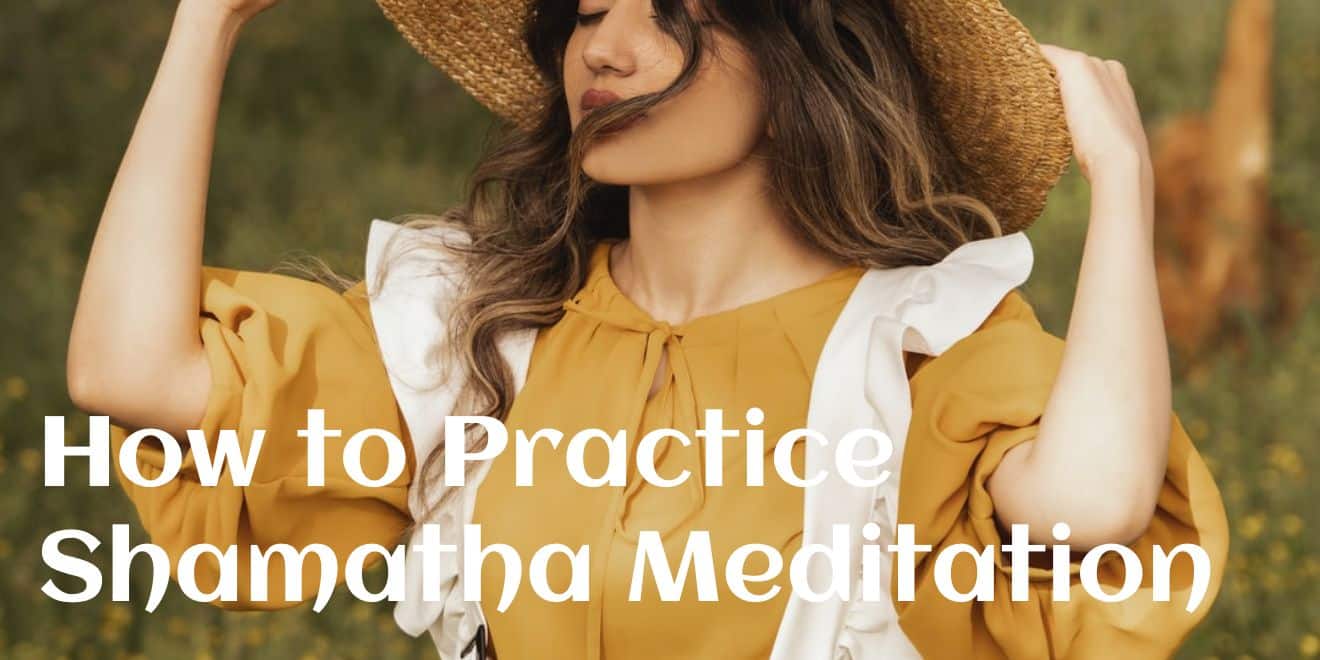What Is Samatha Meditation?
Shamata meditation (sometimes written as samatha meditation), is one of the foundational meditation practices in Buddhist traditions.
Also known as mindfulness meditation, or concentration meditation, the aim of shamatha is to introduce a student to the practice of observation and focus on the mind.
Most beginning meditation students are not aware of just how many thoughts are constantly flowing through the mind. This is natural, and the aim of shamatha is not to get rid of these thoughts, but simply to learn how to observe them.
Usually, shamatha meditation techniques center around the use of specific objects, or anchors of focus. Perhaps the most common anchor is to focus on the breath, but this is not the only anchor. Trataka meditation, for example, has the user focus on the softly-moving flame of a candle.
Or, you may focus on a short mantra or chant to incorporate into the practice. One of the most common chants is simply to repeat the sacred sound of Om.
Click here to browse other types of mantras you can use.
What is The Meaning of Shamatha?
The term shamatha refers to a state of tranquility, peace, and effortless resting state. Thus, the goal of the practice is to still the many resistant thoughts, while accepting the passage of thoughts through the mind.
In other words, it is a practice of accepting our mind, exactly as it is.

Why Is Shamatha Meditation Important?
Mindfulness meditation is incredibly important to help calm the mind and develop a higher state of awareness.
When you practice shamatha meditation consistently, you will begin to notice that you feel lighter, more peaceful, and more joyful as you go about your day. You begin to detach more easily from your thoughts, so you do not have as strong emotional reactions to triggers in the world around you.
Practicing this meditation also helps you to improve your sense of clarity and focus. Many students report they are able to concentrate more easily on day to day tasks, even outside their meditation practice.
This leads to higher productivity and creativity in a work setting, as well as to stronger feelings of fulfillment and enjoyment in all daily actions.
Read more about the benefits of meditation.
Shamatha vs Vippassana: What’s The Difference?
Shamathat meditation is an umbrella term that refers to a wide variety of meditation styles. The defining characteristic is that the meditations are designed to help practitioners hone their focus and calm the mind.
By contrast, Vippassana meditation is insight meditation. It is sometimes seen as the next step in a student’s meditation journey, and is usually recommended after the practitioner has worked to improve concentration and quiet the mind using mindfulness, or samatha meditation techniques.
There is a subtle distinction here, as Vippassana may be described to have the aim of clearing the mind, as opposed to calming. It requires the practitioner to cleanse the impurities of the mind, through intense focus on the breath. And, because of this, allows the student to let go of any residual thoughts that may arise.
Click here to read more about how to practice Vippassana meditation.
Guided Samatha Meditation for Beginners
In this guided shamatha meditation, I will guide you through a simple practice for noticing the breath. The first time you practice this meditation, simply focus on noticing the breath as it moves in and out of your body.
Before you begin the meditation, make sure you find a posture that is right for you. It is best if you sit upright, in a comfortable position.
Take a moment to set your posture before you begin, so you do not need to move or fidget during the meditation. Take a moment to straighten the spine, with your shoulders back slightly, and your neck and head aligned over the spine.
Then, close your eyes.
As you begin you practice, simply begin to draw your attention to your breath.
Do not worry about what thoughts may come, or if you are doing the practice “right.” It is normal for it to feel like your thoughts are interrupting the practice. Accept that thoughts will come, and allow them to pass easily.
Continue to focus on your breath, noticing as it moves in and out of your body.
You can think:
“Now, I am breathing in.”
“Now, I am breathing out.”
Thinking these ideas silently to yourself helps to center your mind, so you remain focused on the movement of the breath, rather than the many thoughts that may be floating through your mind.
With practice, you can then advance to noticing some of these thoughts. While maintaining your focus on your breath, you can begin to notice that, just as the breath flows constantly in and out of your body, so too do thoughts flow constantly in and out of your mind.
As you meditate, you will find that your concentration may ebb and flow. There will be times when you feel focused and clear, and other times when your thoughts take over. This is a normal part of the process.
When you feel your mind wandering, do not beat yourself up about it. Simply notice that your mind has wandered, and take a moment to reset. Then, come back to your breath.
Continue to notice as you breathe in, and notice as you breathe out.
The practice is simple, but it takes time and patience to master.
This is the first meditation in our Quiet The Mind Course: A 30 Day Introduction to Meditation. When you’re ready to take your practice to the next level, continue to the full course.




